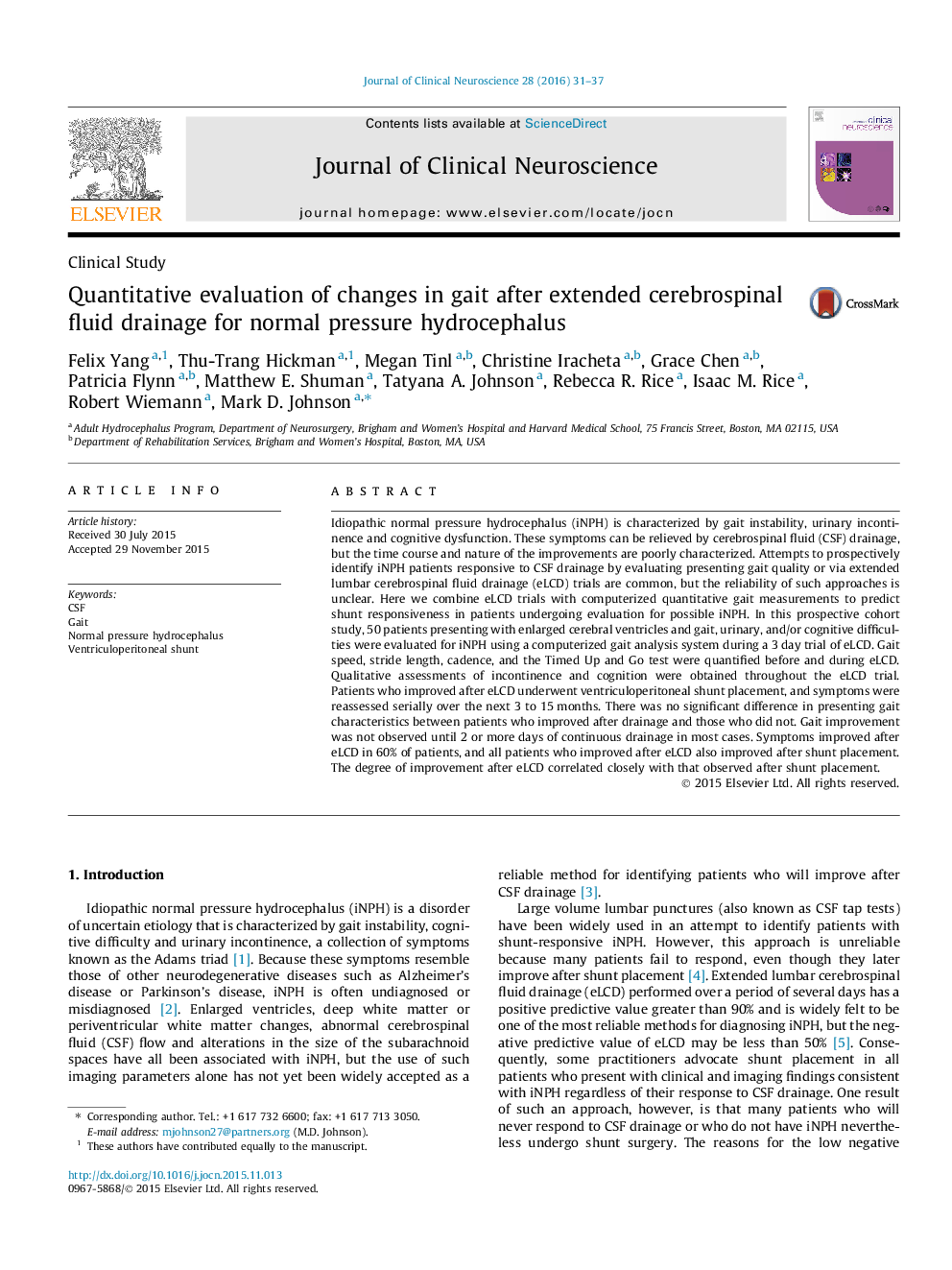| کد مقاله | کد نشریه | سال انتشار | مقاله انگلیسی | نسخه تمام متن |
|---|---|---|---|---|
| 3058343 | 1580288 | 2016 | 7 صفحه PDF | دانلود رایگان |
• Initial gait parameters are insufficient to identify shunt-responsive iNPH patients.
• Most iNPH patients require several days of CSF drainage before symptoms improve.
• Inclusion of urinary and cognitive changes increases lumbar drain predictive value.
• The level of improvement after lumbar drain trial correlates with that after shunting.
Idiopathic normal pressure hydrocephalus (iNPH) is characterized by gait instability, urinary incontinence and cognitive dysfunction. These symptoms can be relieved by cerebrospinal fluid (CSF) drainage, but the time course and nature of the improvements are poorly characterized. Attempts to prospectively identify iNPH patients responsive to CSF drainage by evaluating presenting gait quality or via extended lumbar cerebrospinal fluid drainage (eLCD) trials are common, but the reliability of such approaches is unclear. Here we combine eLCD trials with computerized quantitative gait measurements to predict shunt responsiveness in patients undergoing evaluation for possible iNPH. In this prospective cohort study, 50 patients presenting with enlarged cerebral ventricles and gait, urinary, and/or cognitive difficulties were evaluated for iNPH using a computerized gait analysis system during a 3 day trial of eLCD. Gait speed, stride length, cadence, and the Timed Up and Go test were quantified before and during eLCD. Qualitative assessments of incontinence and cognition were obtained throughout the eLCD trial. Patients who improved after eLCD underwent ventriculoperitoneal shunt placement, and symptoms were reassessed serially over the next 3 to 15 months. There was no significant difference in presenting gait characteristics between patients who improved after drainage and those who did not. Gait improvement was not observed until 2 or more days of continuous drainage in most cases. Symptoms improved after eLCD in 60% of patients, and all patients who improved after eLCD also improved after shunt placement. The degree of improvement after eLCD correlated closely with that observed after shunt placement.
Journal: Journal of Clinical Neuroscience - Volume 28, June 2016, Pages 31–37
